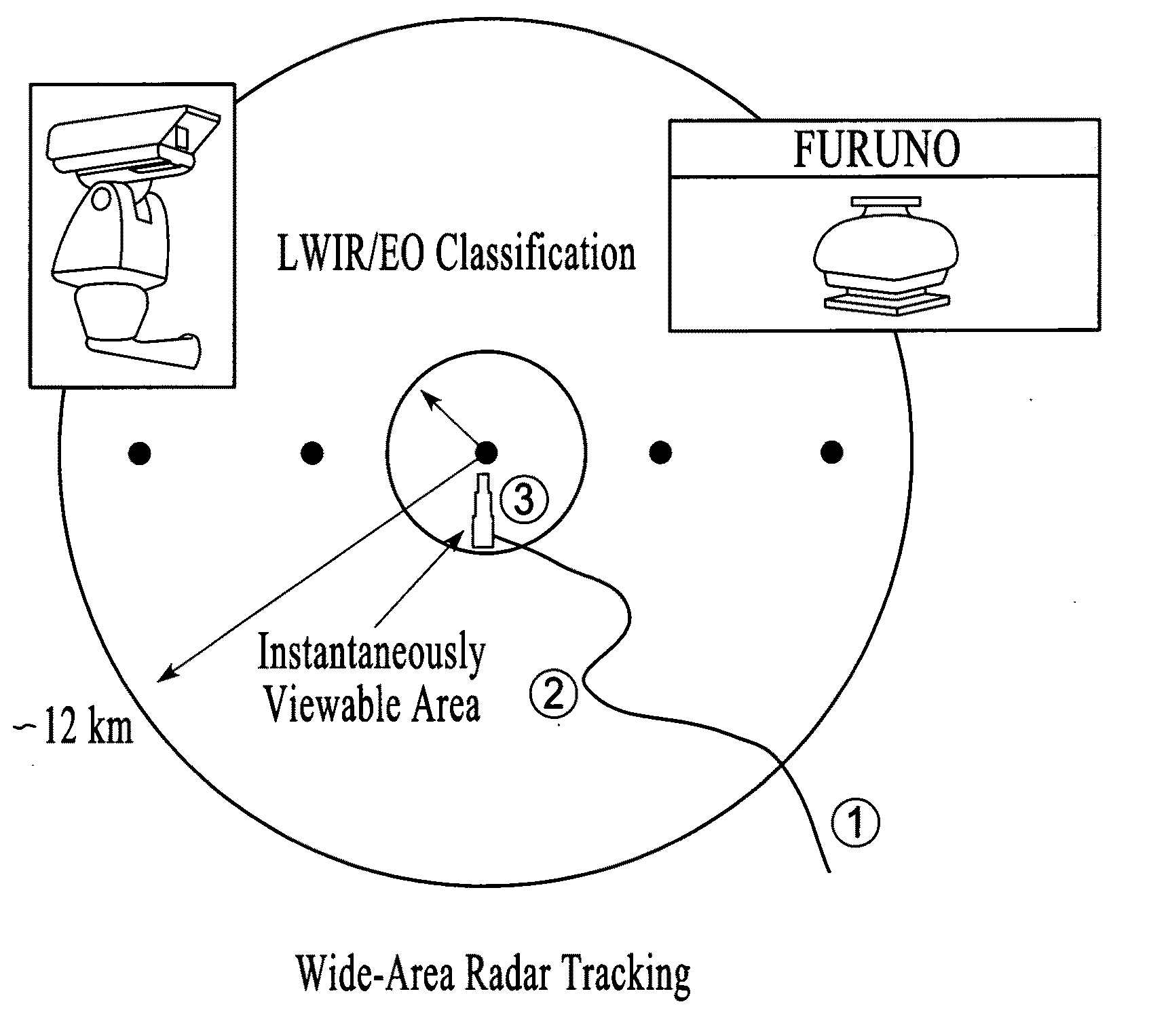Method for surveillance to detect a land target
a technology for detecting land targets and surveillance, applied in the direction of measuring devices, using reradiation, instruments, etc., can solve the problems of difficulty, rvs cameras do not automatically detect movement, and cannot automatically detect movemen
- Summary
- Abstract
- Description
- Claims
- Application Information
AI Technical Summary
Benefits of technology
Problems solved by technology
Method used
Image
Examples
Embodiment Construction
[0081]FIGS. 2 and 3 illustrate schematically the preferred embodiment of a Smart-Sensor System in a tower-based system architecture. The same preferred embodiment could be used in a mobile vehicle with a mast or any other type of structure that allows the embodiment to be elevated sufficient to see the targets in the target area of interest. The primary components of the preferred embodiment of the Smart-Sensor System are (1) a low-cost, COTs, non-coherent radar, whose objective is to detect and track all targets of interest (TOI) out to ranges of 12 km and to cue (2) a narrow field-of-view FOV), long-wave infrared (LWIR) sensor, whose objective is to classify the cued target out to ranges of up to 6 km, and (3) a supercomputer to process the data in real-time at the base of the tower.
[0082]It is important to point out that the essential element of the radar is that a non-coherent radar is used. The preferred embodiment uses a K-band radar, but other frequencies of operation (C-band...
PUM
 Login to View More
Login to View More Abstract
Description
Claims
Application Information
 Login to View More
Login to View More - R&D
- Intellectual Property
- Life Sciences
- Materials
- Tech Scout
- Unparalleled Data Quality
- Higher Quality Content
- 60% Fewer Hallucinations
Browse by: Latest US Patents, China's latest patents, Technical Efficacy Thesaurus, Application Domain, Technology Topic, Popular Technical Reports.
© 2025 PatSnap. All rights reserved.Legal|Privacy policy|Modern Slavery Act Transparency Statement|Sitemap|About US| Contact US: help@patsnap.com



